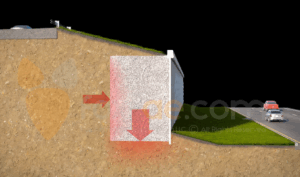Animation plays a significant role in multimedia learning as a powerful tool for simulating motion and providing dynamic visual explanations of complex concepts. In this article, we explore the value of animation in education, how it can enhance multimedia presentations, and the conditions under which it promotes learning.
What is Animation in Multimedia Learning?
At its core, animation refers to a simulated motion picture that depicts the movement of drawn or simulated objects. Unlike static illustrations, which represent objects in a single frame, or videos, which depict natural objects in motion, animation involves artificially created objects brought to life through drawing or simulation. It combines pictorial representation with the illusion of motion, offering an engaging and often simplified way to represent dynamic processes.
Key Features:
- Pictorial: Animation is a visual representation.
- Motion: It depicts movement, giving the viewer the impression of dynamic change.
- Simulation: The objects in animation are artificial, created through design or drawing rather than captured in real life.
While animation (e.g., cartoons) is widely recognized as entertainment, its educational potential is substantial, particularly when integrated into multimedia learning environments. But how effective is animation as an educational tool, and under what conditions can it best support learning?
Does Animation Enhance Learning?
Researchers have debated whether animation inherently improves learning. Early media research compared learning outcomes from different media, such as text, video, and animation. However, researchers like Clark (1994) and Kozma (1994) have argued that such comparisons are primarily unproductive because the effectiveness of a medium depends on how it is used rather than the medium itself.
This shift in perspective has led to a learner-centered approach, focusing on understanding the conditions under which animation influences learning. Instead of asking, “Does animation improve learning?” the more relevant question is, “When and how does animation affect learning?”
How Animation Fits into Multimedia Learning
Multimedia learning involves the use of multiple forms of media to present information. It can be categorized by sensory modalities (e.g., visual vs. auditory) or representational modes (e.g., pictorial vs. verbal). In multimedia learning, animation is a visual/pictorial medium processed through the learner’s visual channel, while narration, for example, is processed through the auditory channel.
Consider the following scenario: Alice is writing a report on filmmaking and looks up “animation” in an online encyclopedia. She is presented with an explanatory text and a 30-second animated demonstration of the animation process. This combination of verbal and pictorial information represents multimedia learning. In this case, the animation illustrates the process visually, while the text provides the accompanying verbal explanation.
Similarly, educational games offer another avenue for animation in multimedia learning. For instance, animation might simulate scientific concepts in a physics-based game, while verbal feedback from a computer-generated coach guides the learner. Such microworld games provide interactive simulations that allow students to engage with dynamic representations of real-world situations, making abstract concepts more tangible and understandable.
Real-World Applications of Animation in Multimedia Learning
Animation has been used in educational settings to explain scientific processes, demonstrate mechanical systems, and illustrate natural phenomena. Research conducted by Mayer (1997, 1999) examined animated instructional messages to teach concepts such as how lightning storms form, how pumps operate, and how human lungs function. These narrated animations, ranging from 30 to 180 seconds, break down complex systems into digestible steps.
For example, the animation on lightning formation illustrates processes like cool, moist air moving over a warm surface and rising to form clouds. The accompanying narration provides verbal descriptions of each step, helping learners understand what happens and why it happens. Testing learners on their ability to apply this knowledge to novel situations (e.g., transfer tests) has shown that animation, combined with narration, can significantly enhance understanding.

The Role of Animation in Microworld Games
Microworld games are another excellent example of animation’s potential in education. Learners can interact with animated elements in these simulated environments to explore scientific and mathematical concepts. A game called “Click World” teaches physics concepts by guiding players through animated mazes with verbal coaching. Another example is a botany game, where students design plants suited to various environments, guided by an animated agent named “Herman the Bug.”
In these games, animation plays a crucial role in visualizing concepts that would be difficult to grasp through static images or text alone. It allows learners to experiment, observe outcomes, and receive immediate feedback, contributing to deeper learning and retention.
Best Practices for Using Animation in Education
Research has identified several fundamental principles for effectively incorporating animation into multimedia learning:
- Cognitive Load Management: Animation should not overload the learner’s cognitive processing capacity. Combining animation with narration (dual coding) can help by distributing information processing across both visual and auditory channels.
- Segmented Delivery: Break complex animations into smaller, digestible segments. This approach prevents cognitive overload and helps learners build understanding step by step.
- Relevance: Animation should be directly related to the learning content. Irrelevant animations may distract from the learning goals and reduce the effectiveness of the educational message.
- Interactivity: Interactive animations like microworld games allow learners to manipulate variables and see the effects in real time. This hands-on approach can lead to better engagement and understanding.
Conclusion
Animation is a powerful tool in multimedia learning, offering dynamic visual representations that can simplify complex ideas and engage learners. However, its effectiveness depends on how it is used. When designed with attention to cognitive load, relevance, and interactivity, animation can significantly enhance learning outcomes, particularly in fields that benefit from visual explanations of processes and systems.
By integrating animation into educational materials, educators can provide learners with immersive, engaging experiences beyond static images and text, helping them visualize and understand concepts more deeply.
Explore the topic more with this insightful article: How Do People Learn from Words and Pictures.
Source: Mayer, R. E. (2001). Multimedia learning. Psychology of Learning and Motivation, 41, 85-139. https://doi.org/10.1023/A:1013184611077





